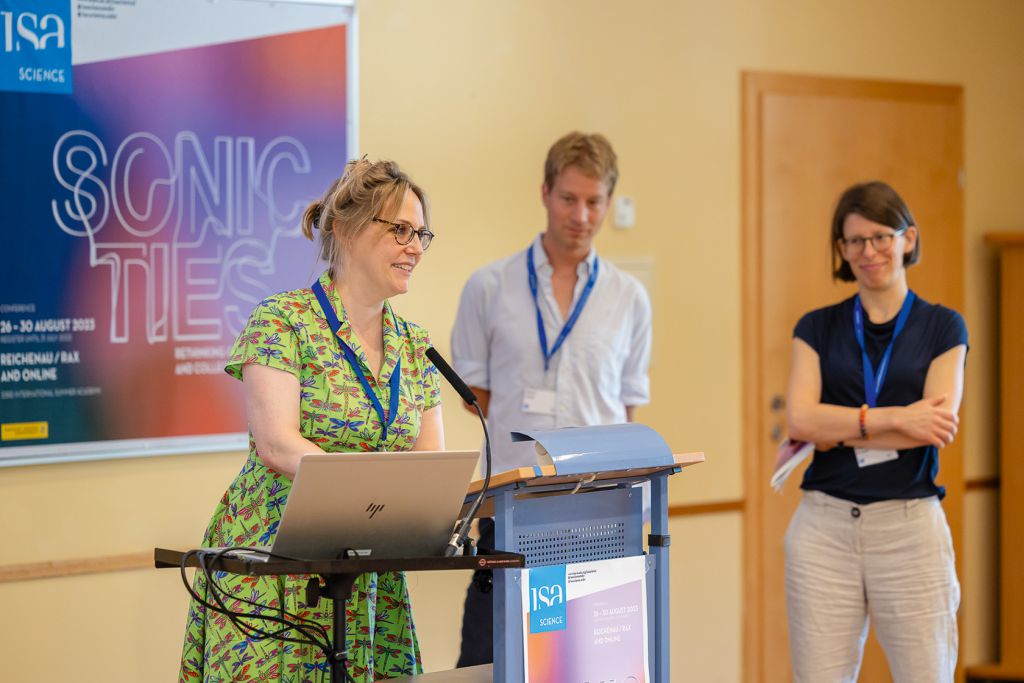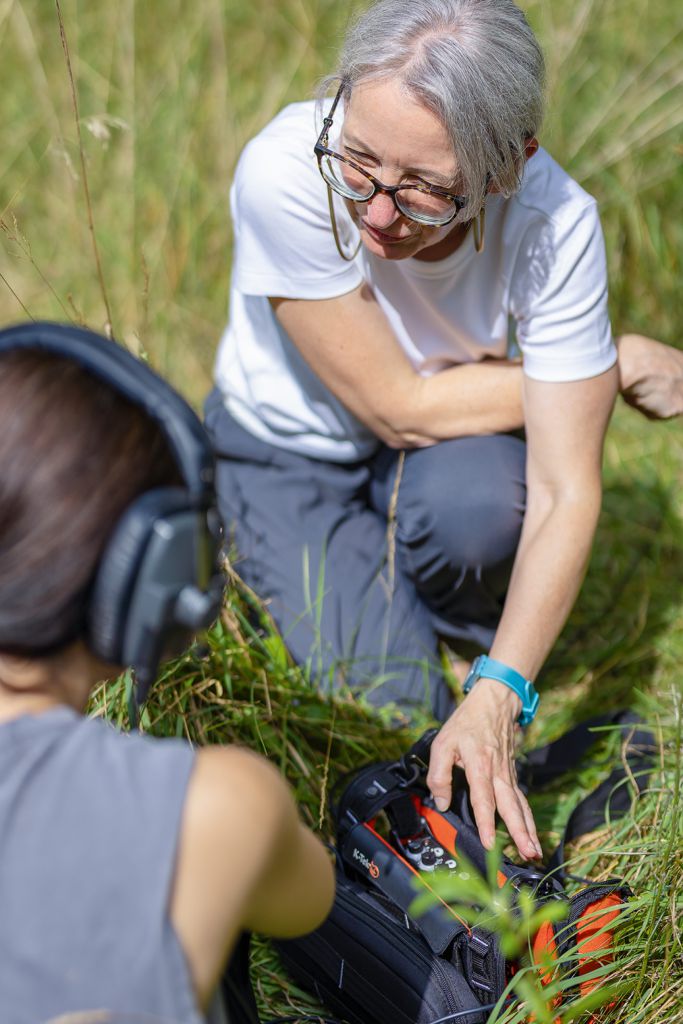A Report from the 2023 isaScience Conference
How does sound give rise to community? And of what nature are such “Sonic Ties”? What different forms and dimensions of sonic participation exist, and to what extent are they determined by local or globalised experiences? The broad interdisciplinary programme of this year’s isaScience conference, entitled “Sonic Ties: Rethinking Communities and Collectives”, pursued these and numerous related questions. With an eye to communities and collectives ranging from social movements to artist groups and from ethnic communities all the way to “sonic ties” of the non-human sort, the 2023 isaScience conference zeroed in particularly on the interrelations between sound as such and power structures that exist in sound, music, and the performing arts at large.

The function of sound in connection with activism and protest was dealt with in numerous contributions such as the keynote lectures Histories of Workers’ Songs: Between Communities and Representations by Srđan Atanasovski and Musical Leisure: Sonic Ties against Commodification and Exploitative Forms of Lives by Ana Hofman. Lectures by participants including Andrea Liu, Carolin Müller, and Masimba Hwati broadened this thematic block by diverse international perspectives associated with contexts ranging from the Occupy Wall Street movement to 2020’s left- and right-wing demonstrations in Dresden and on to the 1960 Zhii riots directed against the colonial regime in Zimbabwe. Several lectures were also devoted to the political (and identity politics-related) implications of pop and rock music. In his keynote lecture Listening to Dolly Parton’s Elusive Race Politics, Sumanth Gopinath analysed the US country icon’s best-known songs by way of various approaches that included close reading. Further contributions by Archita Arun, Sophie Zehetmayer, and Zu Lingshan examined such diverse musics and groups as the R’n’B songs by the Swiss-Tamil rapper Priya Ragu, the experimental pop of the Scottish singer Sophie, and Chinese-Mongolian rock formations.

How community can be understood beyond just the human realm—for instance via the involvement of planetary ecology or religious practices such as Voodoo—was demonstrated in Alexandrine Boudreault-Fournier’s keynote lecture Listening to the Sonic Sea: Creating Ties in Time of Change as well as in performance lectures and artistic contributions by Collin Edouard, Serena Lee, and Luca Soudant. In British artist Michelle Atherton’s listening sessions entitled Listening to the Soil, participants could immerse themselves interactively in sounds produced by components of the conference’s natural surroundings—such as the rustling of the tall grass along the banks of the mountain brook Schwarza, picked up by a contact microphone and listened to through headphones. The Critical Lecture Walk through Reichenau led by Juri Giannini revealed historical insights concerning regional music and the town of Reichenau along with the surrounding landscape. The question of the extent to which music and sound can give rise to and shape spaces was also pursued by Katherine Griffiths, Thalia Raftopoulou, and Gui Ren in contributions that took the audience on a journey through the lesbian club scene of 1980s London, into the soundscapes of residential buildings in Athens, and across the big city tapestry of sound to be heard in Hong Kong.
Finally, and quite fittingly in light of isaScience’s full decade of existence, this year’s conference rounded out its focus on questions concerning togetherness with a look inward at its own history. In the concluding round table discussion, founders Ursula Hemetek and Cornelia Szabó-Knotik spoke about the beginnings of isaScience and then joined Marko Kölbl and Therese Kaufmann as well as the conference participants in an animated exchange that scrutinised the potentials of such an interdisciplinary conference. It was thus that during the farewell lunch together at Hotel Looshaus am Kreuzberg, one’s gaze could sweep through the distance in more ways than one: both across the alpine landscape of the Rax and the Semmering and into the fertile future to which isaScience can look forward.
Keynotes and selected contributions can be streamed at the mdw Repository.

